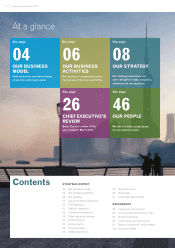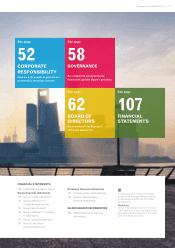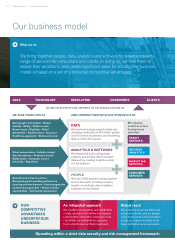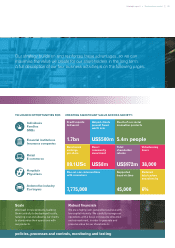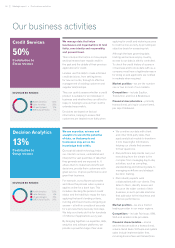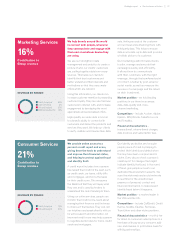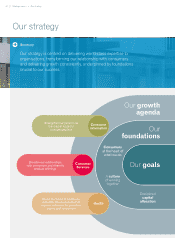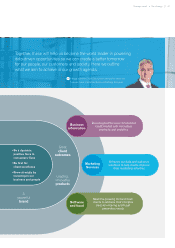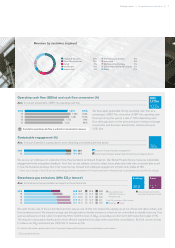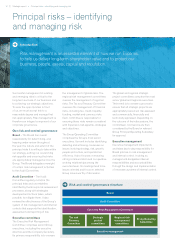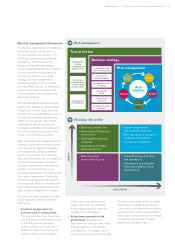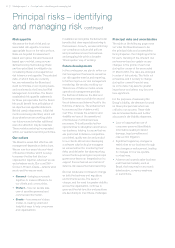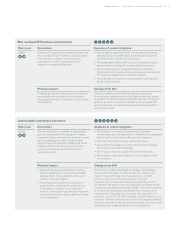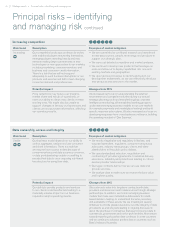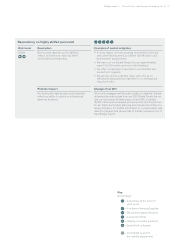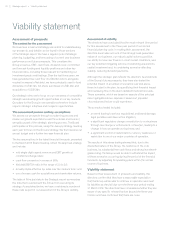Experian 2016 Annual Report Download - page 14
Download and view the complete annual report
Please find page 14 of the 2016 Experian annual report below. You can navigate through the pages in the report by either clicking on the pages listed below, or by using the keyword search tool below to find specific information within the annual report.
12
Risk management is an essential element of how we run Experian,
to help us deliver long-term shareholder value and to protect our
business, people, assets, capital and reputation.
Introduction
Principal risks – identifying
and managing risk
Successful management of existing
and emerging risks is critical to the
long-term success of our business and
to achieving our strategic objectives.
To seize the opportunities in front
of us, we must accept risk to a
reasonable degree and manage that
risk appropriately. Risk management is
therefore an integral component of our
corporate governance.
Our risk and control governance
Board – The Board has overall
responsibility for determining, and
keeping under review throughout
the year, the nature and extent of the
principal risks it is willing to take within
our strategy, setting our overarching
risk appetite and ensuring that risks
are appropriately managed across the
Group. The Board delegates oversight
of certain risk management activities
to the Audit Committee.
Audit Committee – The Audit
Committee regularly monitors the
principal risks and uncertainties
identified by the Group’s risk assessment
processes, along with strategies
developed and actions taken, where
possible, to mitigate them. It also
reviews the effectiveness of the Group’s
system of risk management and internal
controls that supports the identification,
assessment and reporting of risk.
Executive committees
The Executive Risk Management
Committee comprises senior Group
executives, including the executive
directors and the Company Secretary.
Its primary responsibility is to oversee
the management of global risks. The
regional risk management committees
oversee the management of regional
risks. The Tax and Treasury Committee
oversees the management of financial
risks, including tax, credit, liquidity,
funding, market and currency risks.
Each committee is responsible for
ensuring these risks remain consistent
with Experian’s risk appetite, strategies
and objectives.
The Group Operating Committee
comprises the Group’s most senior
executives. Its remit includes identifying,
debating and achieving consensus on
issues involving strategy, risk, growth,
people and culture, and operational
efficiency. It also focuses on ensuring
strong communication and co-operative
working relationships among the
executive team. Its meetings tend to be
issues oriented and focus on selected
Group issues worthy of discussion.
The global and regional strategic
project committees comprise the most
senior global and regional executives.
Their remit is to oversee a process to
ensure that all strategic projects are
appropriately resourced, risk assessed
and commercially, financially and
technically appraised. Depending on
the outcome of their discussions, the
committees’ conclusions are then
considered by the Board or relevant
Group Principal Operating Subsidiary
for approval.
Executive management
Executive management implements
and takes day-to-day responsibility for
Board policies on risk management
and internal control. In doing so,
management designates internal
responsibilities and accountabilities
through the design and implementation
of necessary systems of internal control.
Risk and control governance structure
Board
Audit Committee
Executive Risk Management Committee
Executive management
Tax and
Treasury
Committee
Group Operating
Committee
Regional risk
management
committees
Strategic
project
committees
Strategic report •Principal risks – identifying and managing risk


